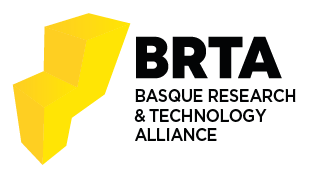Trajectory Clustering for the Classification of Eye-Tracking Users with Motor Disorders
Authors: Alejandro Clemotte Miguel Ángel Velasco Jon Goenetxea Imaz Unai Elordi Hidalgo Eduardo Rocon Ramón Ceres Javier Bengoechea Iosu Arizkuren Eduardo Jauregui
Date: 07.09.2016
Abstract
This paper presents a pilot study completed in the framework of the INTERAAC project. The aim of the project is to develop a new human-computer interaction (HCI) solution based on eye-gaze estimation from webcam images for people with motor disorders such as cerebral palsy, neurodegenerative diseases, and spinal cord injury that are otherwise unable to use a keyboard or mouse. In this study, we analyzed cursor trajectories recorded during the experiment and validated that users with different diseases can be automatically classified in groups based on trajectory metrics. For the clustering, Ward’s method was used. The metrics are based on speed and acceleration statistics from full filtered tracks. The results show that the participants can be grouped into two main clusters. The main contribution of this work is the evaluation of the clustering techniques applied to eye-gaze trajectories for the automatic classification of users diseases based on a real experiment carried with the help of three clinical partners in Spain.
BIB_text
title = {Trajectory Clustering for the Classification of Eye-Tracking Users with Motor Disorders },
pages = {1-6},
keywds = {
Trajectory, eye-tracking, classification
}
abstract = {
This paper presents a pilot study completed in the framework of the INTERAAC project. The aim of the project is to develop a new human-computer interaction (HCI) solution based on eye-gaze estimation from webcam images for people with motor disorders such as cerebral palsy, neurodegenerative diseases, and spinal cord injury that are otherwise unable to use a keyboard or mouse. In this study, we analyzed cursor trajectories recorded during the experiment and validated that users with different diseases can be automatically classified in groups based on trajectory metrics. For the clustering, Ward’s method was used. The metrics are based on speed and acceleration statistics from full filtered tracks. The results show that the participants can be grouped into two main clusters. The main contribution of this work is the evaluation of the clustering techniques applied to eye-gaze trajectories for the automatic classification of users diseases based on a real experiment carried with the help of three clinical partners in Spain.
}
date = {2016-09-07},
year = {2016},
}







